The pains of bad UX are felt by millions every day
“Ben has the talent to listen to users, to understand their needs and turn insights into world-class work”
– Maryam Fatemi, UX Research Consultant
“Ben revived a weary research practice, rolled out new processes, and evolved us into a more data-informed product team. He’s comfortable navigating uncertainty and working autonomously”
– Isabel Benavente, Product Manager
“Ben was able to educate, convince and support his UX methodology with the right balance of research, creativity, and technical know-how.”
– Zahir Mazar, Agile Project Manager
AWARDS
NN/g Nielsen Norman Group
Jan 2020
Proud winner of the Nielsen Norman Group’s Intranet Design Annual (report), in its 20th anniversary year.
Barclays Intranet Researcher & Designer
Bowen Crags #3
Feb 2017 – 2020
Held top #3 position for 3 years in the Index of Online Excellence
GSK UX Manager
Digital Effectiveness Award
May 2015
Awarded for Interaction design experience in competition with Londons top design agencies.
Mace Prototyping & Interaction Design
EXPERIENCE
Lead UX Consultant
2020
Data-heavy Fintech project for Back-office & Payroll System
Coople: Strategy, Blue Printing, Research & Design
Senior UX Designer
2019
I developed several apps as part of Dentsu’s Digital Media Ecosystem
Dentsu Aeigis: User Interviews, Surveys & Experience Design
Senior UX Consultant
2018
AR/VR, Speech to text and Audio dictation IOS app
The Next Layer: User Interviews, Usability Testing, UX / UI Design
SECTOR EXPERIENCE
FinTech
Complex data-led finance applications
Retail
Experiential, Microsites, Advertising, Apps
HealthTech
Mobile HealthTech Service & Application design
Gaming
Game Design, Gambling & Platform engagement
eCommerce
FMCG, Luxury goods, Property
Energy
Dashboards, Corporate Websites, AR app
CASE STUDIES

Problem statement
How do you turn live football into an accessible, on-chain gaming experience that feels fast, social, and rewarding — without forcing users through complex Web3 steps? Akshun aimed to make real-time football interaction fun, mobile-first, and crypto-powered, while keeping the UX simple enough for everyday fans.
Tasks
- Discovery across casual fans, bettors, and Web3-native users
- Research into real-time sports UX patterns and crypto onboarding
- Mapping game mechanics, scoring, and real-time update flows
- UX for minting, pass reveals, game participation, and prize logic
- UI system for dashboard, player passes, fixtures, and live states
- Mobile-first interaction design for fast in-game decisions
- Product alignment with engineering and the founding team
Action
I led the entire UX and product design process from early concept through to MVP. Starting with user interviews and competitor analysis, I mapped the complete experience: how a fan discovers Akshun, connects a wallet, mints a Season Pass, reveals their player, joins games, and tracks rewards in real time.
I built all flows for pass minting, reveals, game selection, prize logic, fixtures, dashboard states, and the on-chain components that sit behind them. Because football is fast, clarity and timing were everything. The UX needed to feel like a lightweight sports app, even though the underlying mechanics were fully Web3.
I designed the UI system — NFT passes, live game tiles, leaderboard states, earnings, match breakdowns — and worked closely with devs to simplify interactions, reduce friction, and ensure wallet steps didn’t overwhelm non-crypto users.
The result was an MVP that took users from “connect wallet” to “play live” in minutes, with a gaming experience that feels immediate and mobile-friendly.
Result
- A complete UX + UI system for the Akshun mobile web app
- Clear flows for minting, pass reveals, live games, and prize payouts
- A mobile-first design system optimised for speed and clarity
- A working MVP on testnet with real user onboarding and gameplay
- A strong foundation for version 2: advanced betting, deeper rewards, and on-chain leaderboards
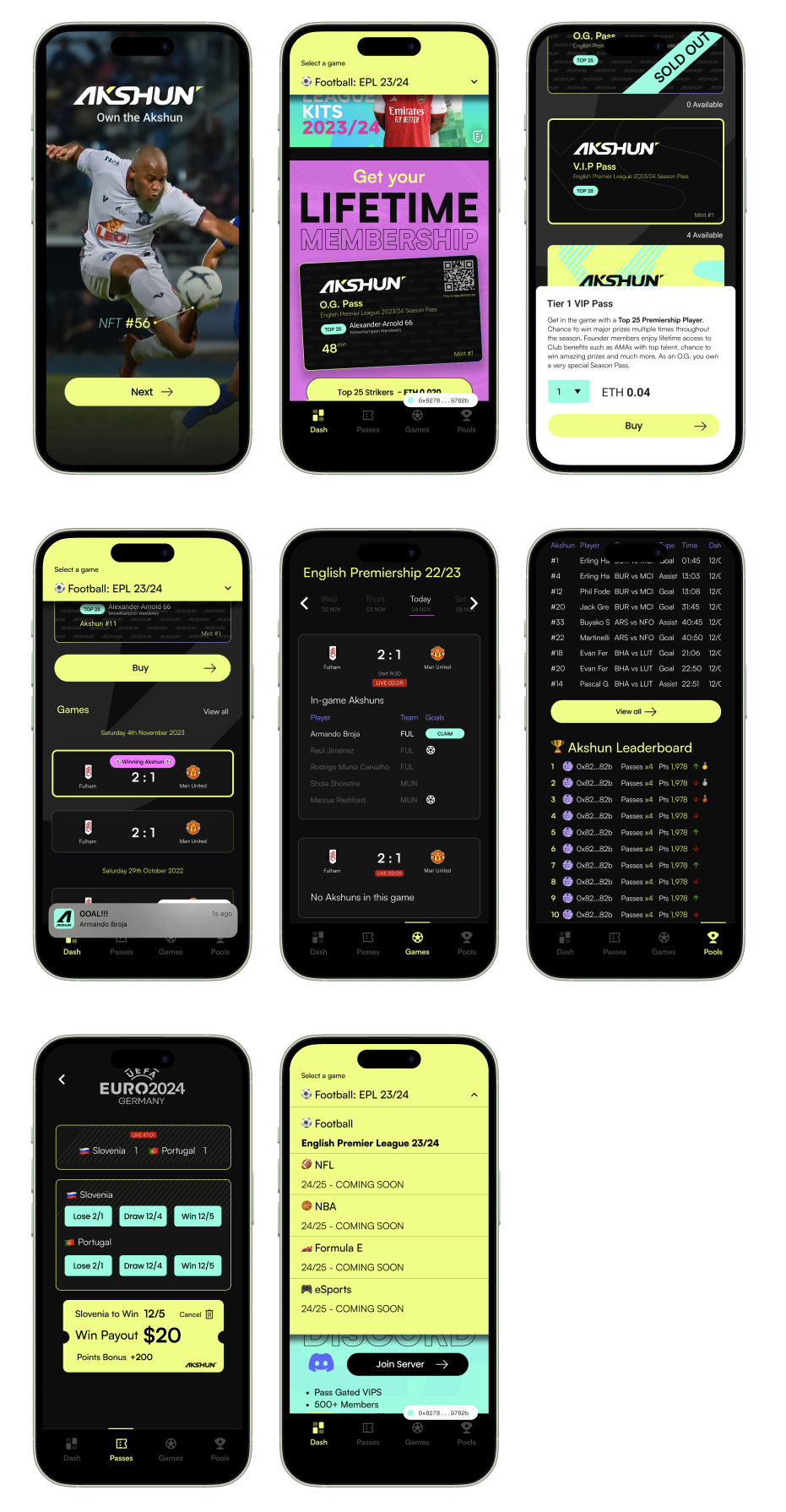

Problem statement
How can people use Web3 without exposing their identity, wallet history, or behavioural fingerprints? Proxy Wallet set out to solve this by creating a “super wallet” that stores atomic credentials, enabling fully private, composable interactions across chains.
Tasks
- Translate a fast-moving founder vision into clear user journeys
- Run internal workshops to educate the wider squad on crypto mechanics
- Technical UX for credential storage, asset control, and private transactions
- Full user flows across onboarding, swaps, trading, and asset management
- End-to-end UX documentation for handoff to UI and engineering
- Close collaboration with the agency design team and the founder
Action
Working agency-side and embedded with the founder, I became the bridge between rapid ideation and functional product design. Proxy Wallet had deeply technical architecture—atomic credentials, proxy execution, privacy layers, multi-chain routing—so my focus was turning that complexity into intuitive, step-by-step flows.
I built a complete UX system covering onboarding, wallet creation, credential issuance, asset swaps, trading interactions, vaults, permissions, and recovery paths. Because privacy was the North Star, every journey mapped the minimum exposure model: how to act on-chain without revealing the user’s underlying identity or intent.
To support the design team, I produced a fully annotated flow library (NFTs, creds, vault, onboarding) that documented every logic branch, state change, and failure mode. This became the backbone for UI and engineering, ensuring everyone understood how the product actually worked.
Result
- A complete UX architecture for a highly technical Web3 privacy wallet
- Unified flows that aligned the founder, agency designers, and engineering
- A scalable system covering onboarding → credentials → private actions
- Clear documentation that accelerated the build and removed ambiguity
- A product vision that made advanced crypto privacy usable for normal humans
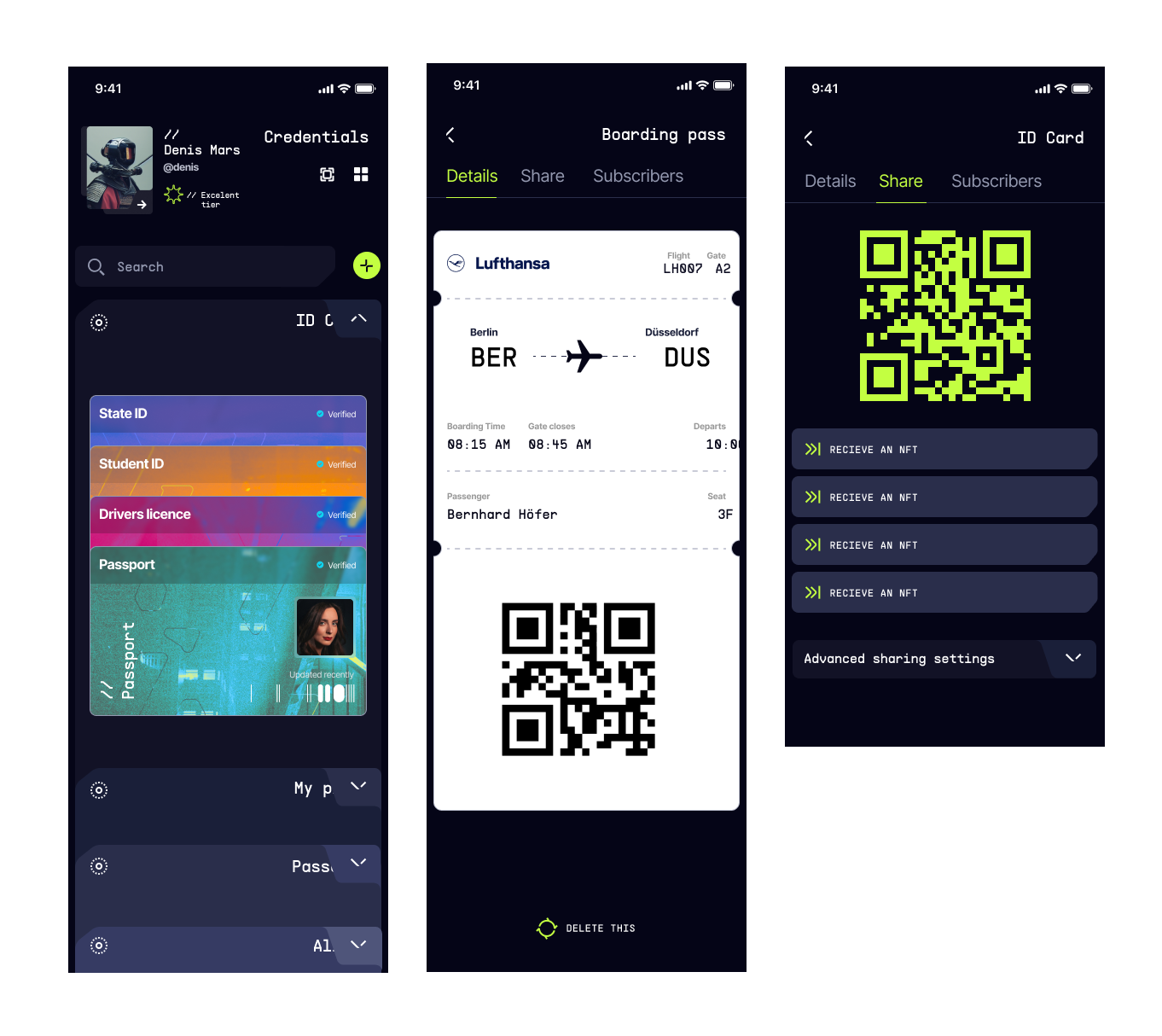
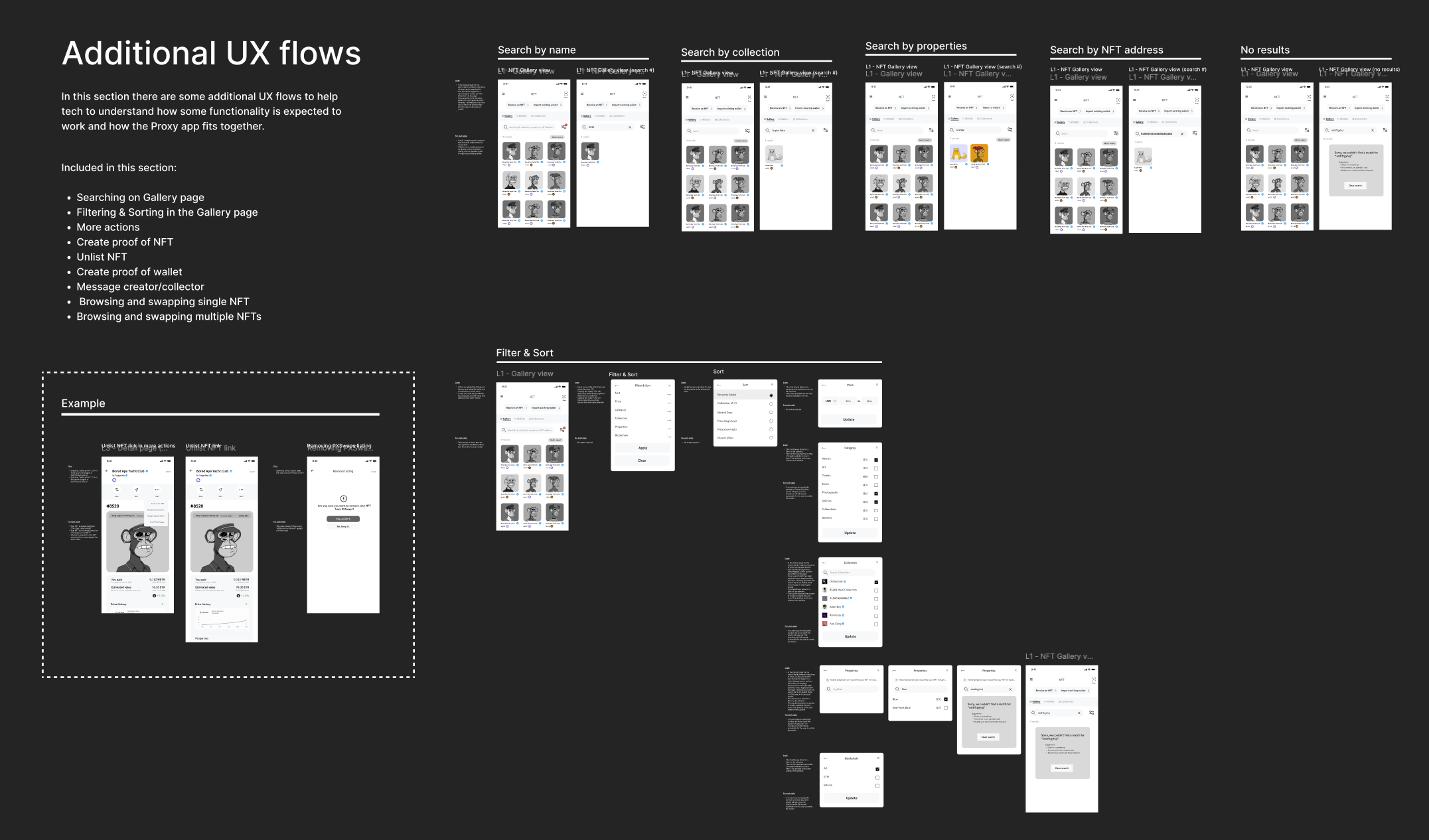


Problem statement
For newcomers and investors entering the crypto space, how can we reduce confusion, help them avoid scams, and provide reliable real-time support in an environment with no regulation or trustworthy entry points?
Tasks
- Discovery interviews with advisors
- Review of existing advisory flows and pain points
- Tokenomics + marketplace research
- UX flows for onboarding, advisor selection, and live support
- UI design for the core product experience (Chat UI and Website)
- Agency management for GTM campaigns
Action
I built The Cake from scratch as a decentralised support marketplace for the crypto ecosystem. Starting from a blank canvas, I ran a complete discovery cycle, mapped user types (first-timers, emerging markets, builders, active traders), and framed a model where incentives, trust, and governance align through a DAO and its native DESUP token.
I generated a research repository covering existing advisory models, crypto UX patterns, and token-driven marketplaces. From there I produced the end-to-end service architecture, the advisor reputation system, subscription and PAYG models, staking flows, and governance mechanics.
I then designed the UI components, dashboard systems, advisor profiles, chat interactions, and token-based micro-transactions. The goal was to make a complex decentralised structure feel simple, safe, and human — while still giving power users full transparency and control.
Result
- A fully defined DAO-based support platform with aligned incentives
- A scalable UI system covering onboarding → support → governance
- Token system with staking and reward mechanics
- Clear advisor pathways that drive reputation, trust, and long-term value
- Investor-ready tokenomics, pitch deck, and brand direction

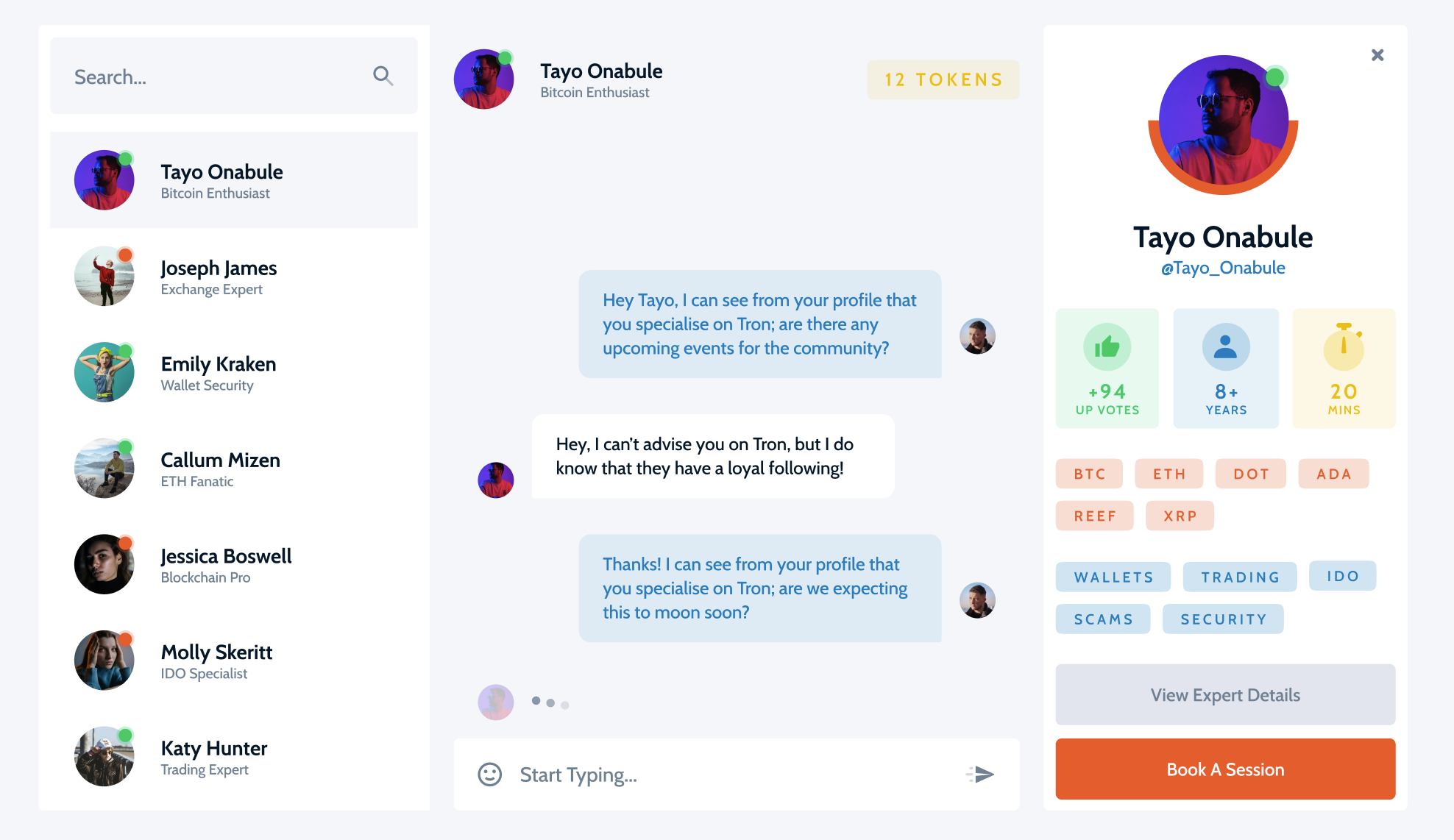

Problem statement
As a financial crime investigator in the blockchain space, how do I get to grips with, track, and evidence criminal activity quickly?
Tasks
- Rapid internal interviews (C-suite and Users)
- Research repo planning and execution
- Currently product review and tear-down
- Alignment with the development team
- Research Presenting (ongoing)
- Figma design
Action
A campaign of discovery research was conducted and plugged into a live research repo document that I set up in order to build out themes and patterns.
Due to the lack of competition in the market Google image searches didn’t work. I signed up for several product trials and built a catalog of UI interfaces to reference as I approached the design.
I designed a design system of complex data mapping components that could scale across blockchains and assets while maintaining simplicity and an intuitive user experience.
Result
- A more comprehensive product feature set
- Removed / consolidated several duplicate ‘destinations’
- Huge uptake on the Beta release that immediately led to product orders and upgrades

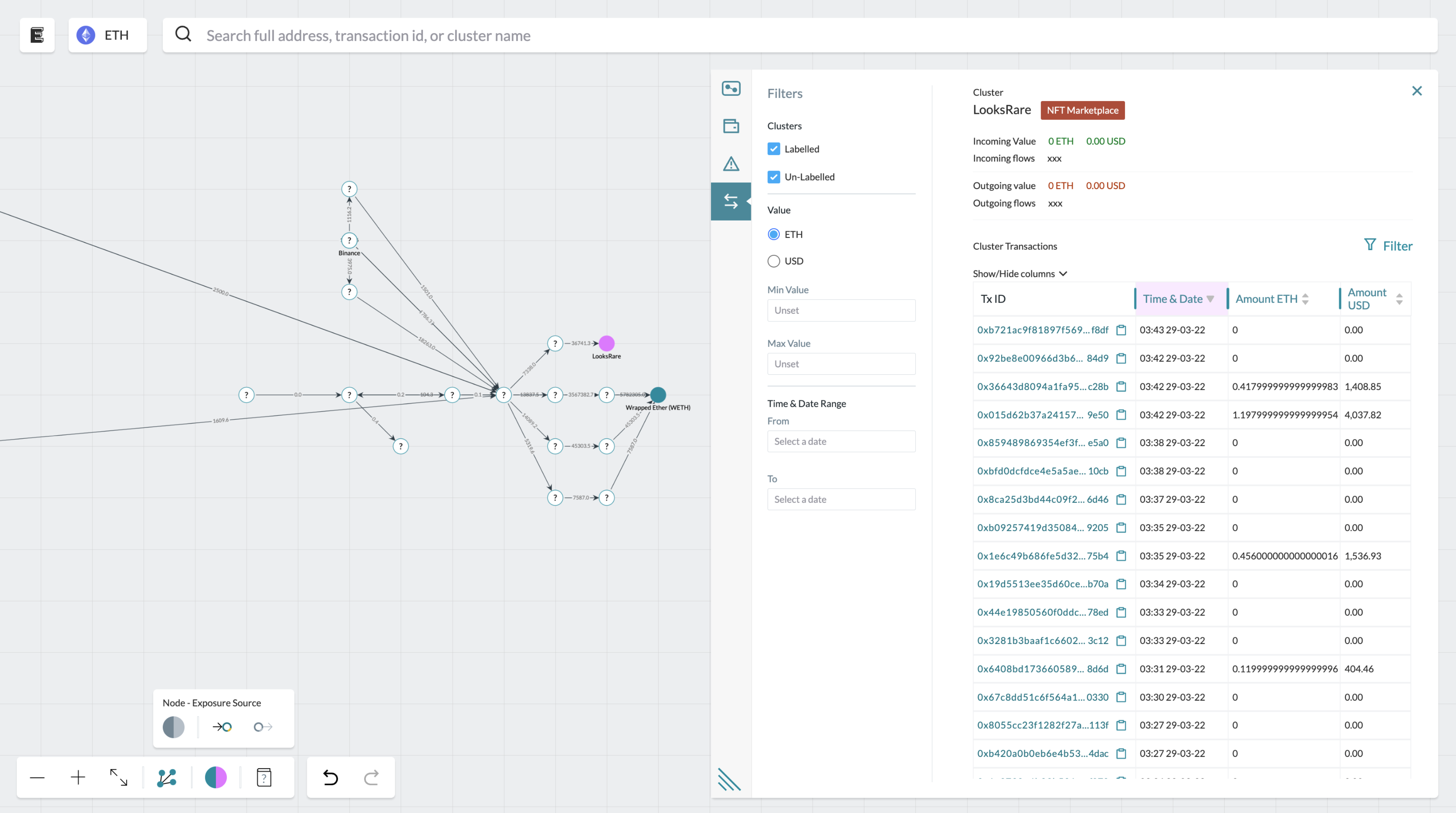

Problem statement
As a payroll administrator, I’m spending hundreds of hours on manual tasks where human error can result in Cooplers not getting paid correctly.
Tasks
- Ethnographic research with primary users
- Sketching workshops
- Blueprint production
- Technical UX design
- Regular UX sharing with the team
Action
After observing and capturing entire payroll process we ran weekly sketch sessions until the whole process was mapped
I then distilled the sketches into blueprint diagrams of the end-to-end process that we used as a point of reference for planning design and development tasks.
I drafted wireframes to share with the users for feedback. After discussing with the product managers and developers and making adjustments I refined the designs and briefed to the dev team.
Result
- Reduced user workload by 25%
- Went from 60 separate manual tasks to 53
- Removed the need to complete tasks in a specific order

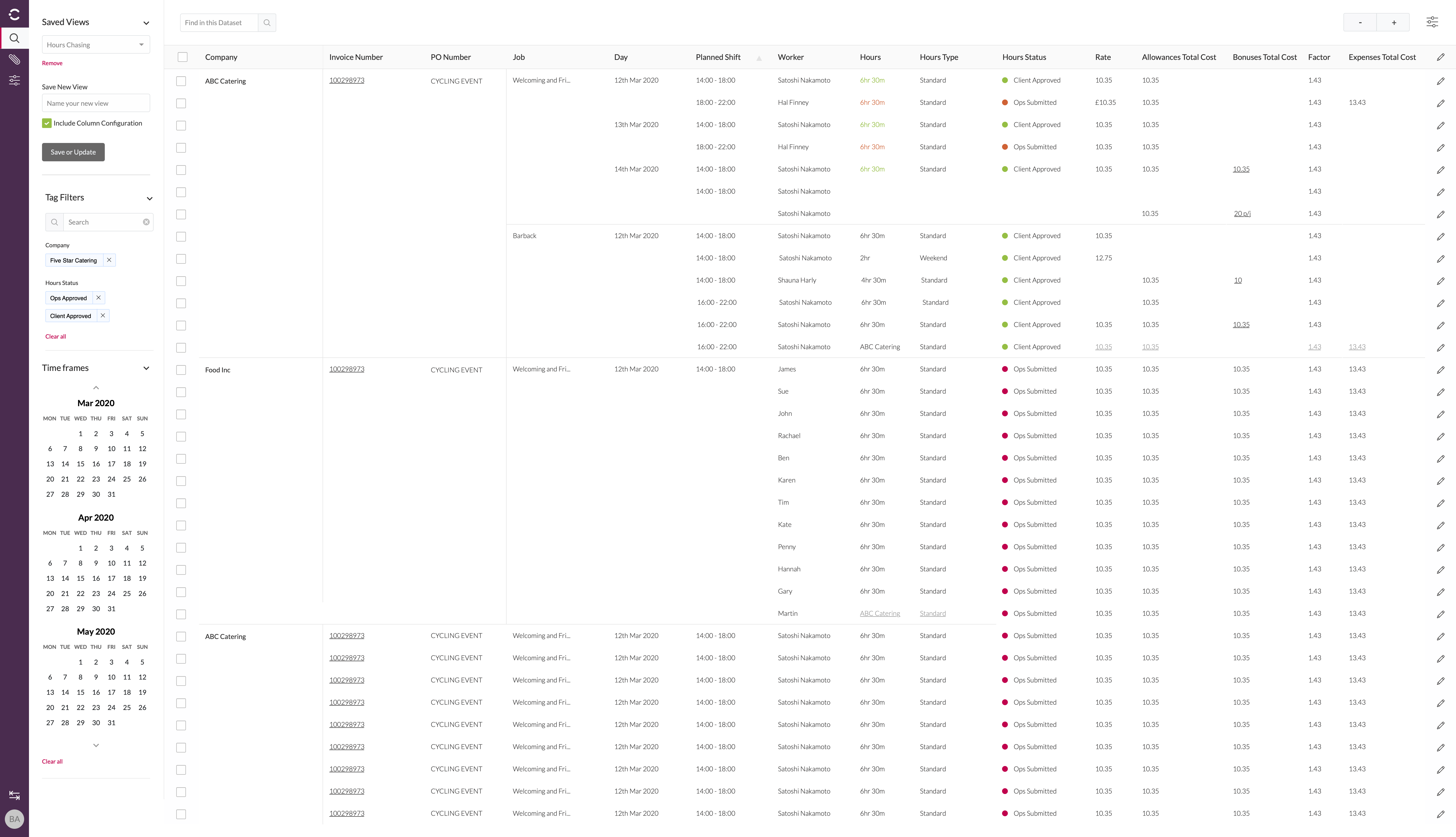

Problem statement
As a business, how can create an international platform that allows producers, distributors, re-sellers, and business customers to get the oil they need to run their businesses locally?
Tasks
- Recruiting, designing, preparing & conducting research activities
- Research synthesis & analysis
- International stakeholder management
- Service design blueprints
Action
Following a series of interviews I synthesized the results into a service blueprint to assist in the international planning of the platform.
I had to work autonomously and with the global project, director to gain access to all market leads as well as review separate platforms that each country chose.
I had to be extremely proactive in bringing international stakeholders together to join weekly workshops in order to deliver against a tight deadline.
Result
- Alignment of international teams
- Clarity on systems, service providers, and software
- A ‘single point of truth blueprint that was used in planning an international multi-layered b-2-b-2-b retail service


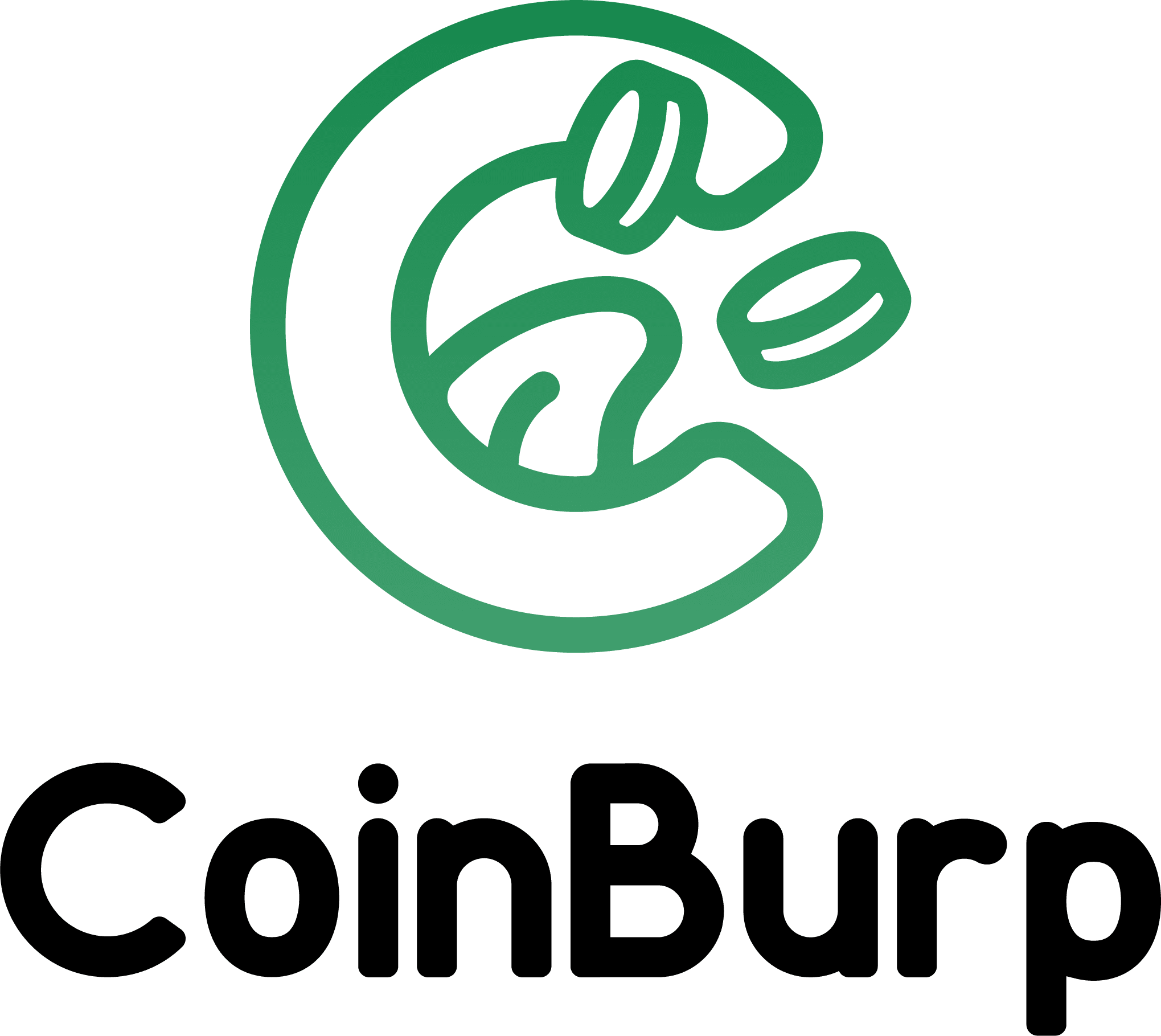
Problem statement
As a user of the Coinburp exchange, how can I obtain and stake my BURP tokens so that I can earn raffle tickets and play them in the staking NFT raffle?
Tasks
- Unpack complex staking mechanics
- Create UX artifact to help the team galvanize around the user flow
- Design a user interface to allow non-technical users to stake and play
Action
I originated the UX design for CoinBurps Staking and DeFi dapp. Due to timing and budget, I provided ‘quick & dirty’ insights via internal surveys and polls on Slack to measure the experience and improve the UX flows.
I sketched up user flows for testing and then refined them into clickable prototypes in order to get a good feel for how the tool flowed. I then worked with the UI designers to add a branded element and interactions to the dapp.
Result
- A fun staking game that stabilised the value of the BURP token on the open market
- Non-crypto users were proven to be able to transfer and stake BURp tokens
- Users had fun earning raffle tickets and returned to the dapp to play the tickets and win NFTs


CONNECT WITH ME!
Connect with me on LinkedIn